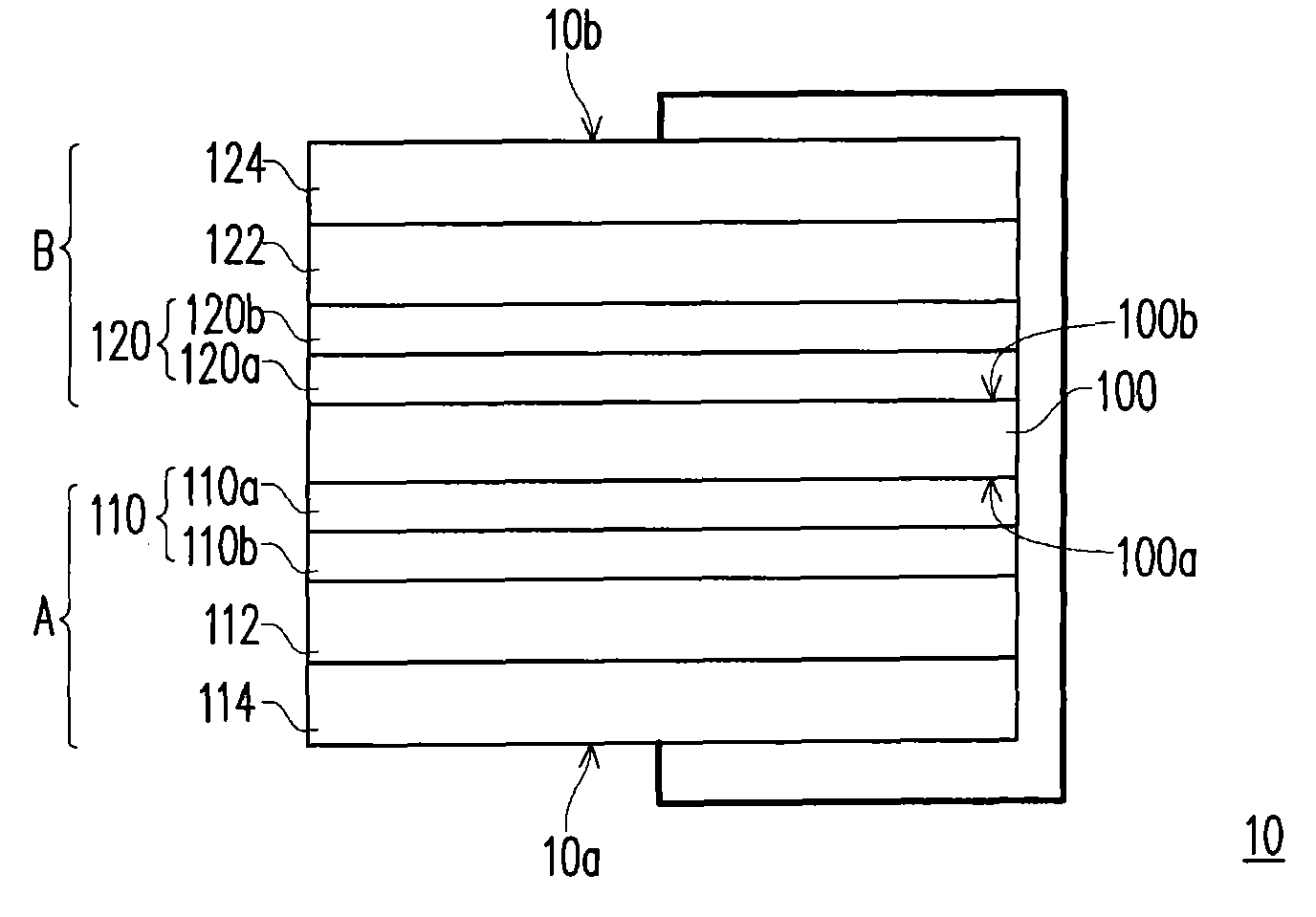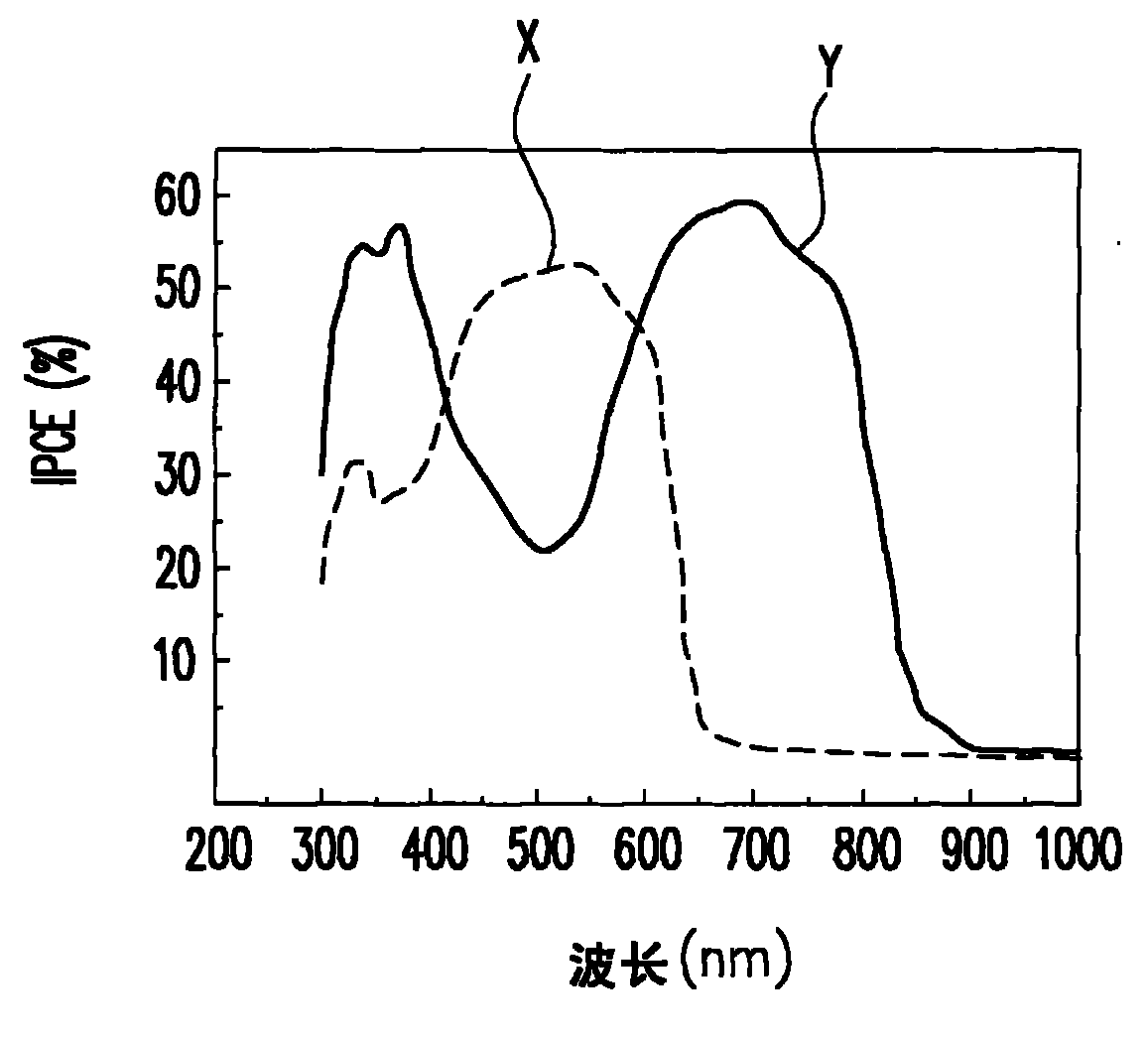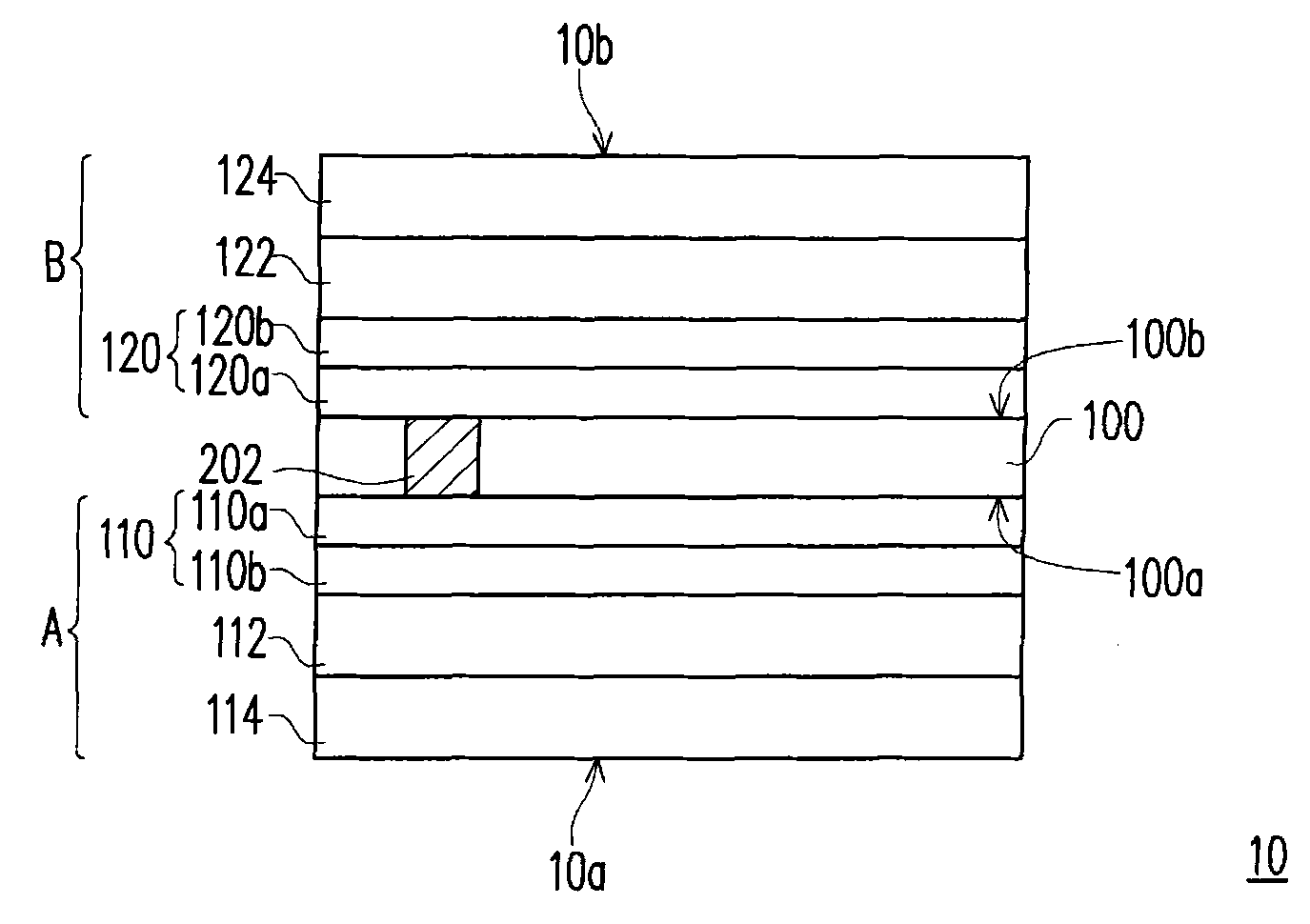Solar cell module
A solar cell and electrode layer technology, applied in circuits, photovoltaic power generation, electrical components, etc., can solve the problems of insufficient photoelectric conversion rate of solar cell light absorptivity, and achieve the effect of improving overall performance and light absorptivity
- Summary
- Abstract
- Description
- Claims
- Application Information
AI Technical Summary
Problems solved by technology
Method used
Image
Examples
Embodiment Construction
[0049] figure 1 is a schematic cross-sectional view of a solar cell module according to an embodiment of the present invention. Please refer to figure 1 , the solar cell module 10 of this embodiment has a light incident surface 10 a and a light reflecting surface 10 b, and the solar cell module 10 includes a substrate 100 , a first solar cell A and a second solar cell B.
[0050] The substrate 100 has a first surface 100a and a second surface 100b. The substrate 100 can be a rigid substrate (such as a glass substrate, a silicon substrate) or a flexible substrate (such as an organic polymer substrate), preferably a flexible substrate. If the substrate 100 is a flexible substrate, the solar cell module 10 of this embodiment can be manufactured by a continuous roll to roll manufacturing process.
[0051] The first solar cell A includes a first electrode layer 110 , a first active layer 112 and a second electrode layer 114 .
[0052] The first electrode layer 110 is located on...
PUM
 Login to View More
Login to View More Abstract
Description
Claims
Application Information
 Login to View More
Login to View More - R&D
- Intellectual Property
- Life Sciences
- Materials
- Tech Scout
- Unparalleled Data Quality
- Higher Quality Content
- 60% Fewer Hallucinations
Browse by: Latest US Patents, China's latest patents, Technical Efficacy Thesaurus, Application Domain, Technology Topic, Popular Technical Reports.
© 2025 PatSnap. All rights reserved.Legal|Privacy policy|Modern Slavery Act Transparency Statement|Sitemap|About US| Contact US: help@patsnap.com



